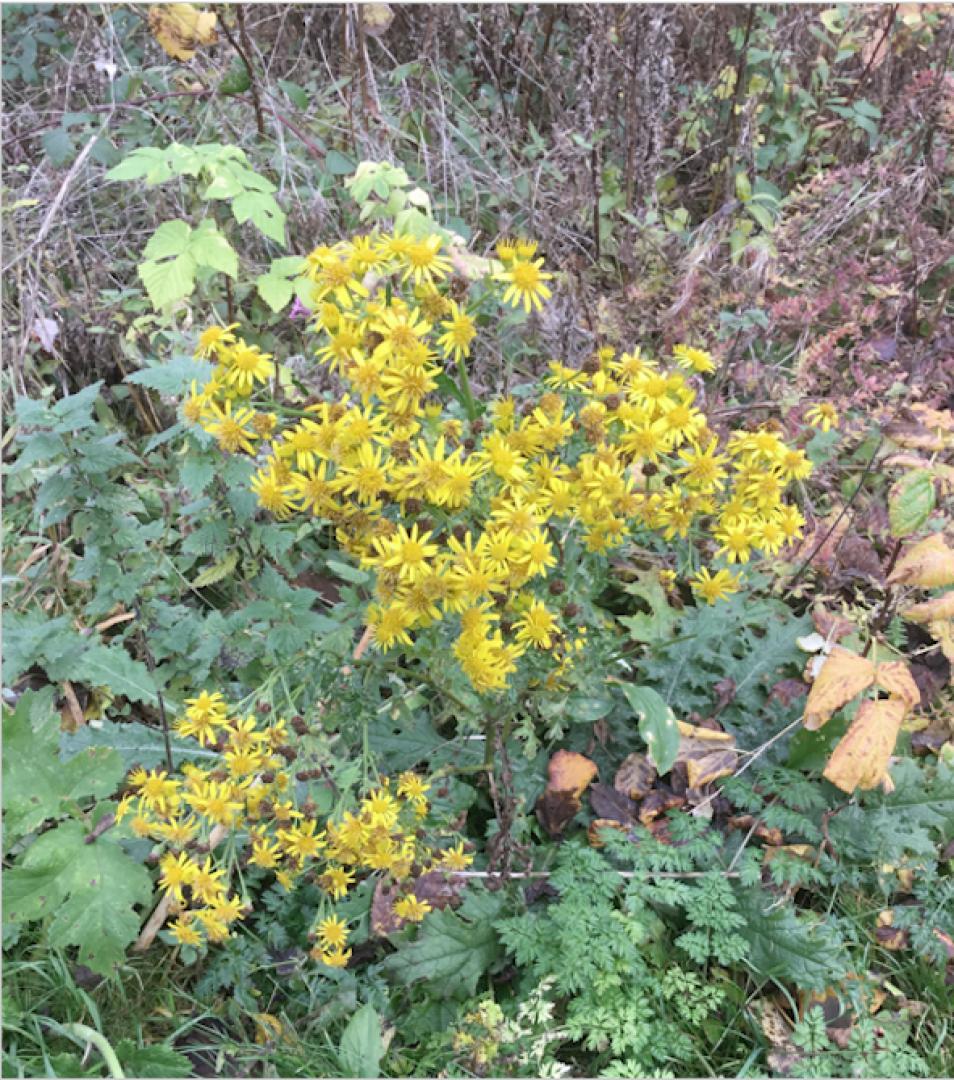Ragwort – Senecio jacobaea
WITH a name like ragwort you might expect this plant to be tatty and untidy, but it is in fact rather handsome and colourful – though it has its dark side.
It is a common weed of waysides, waste land, neglected and overgrazed pastures and even of suburban lawns. You will notice it in your grass by the dark green curly leaves, and since it doesn’t have an underground spreading stem, it is easily controlled by mowing.
In pastures it appears in late summer and goes unnoticed until the heads of bright golden yellow flowers appear. It is then that you may see groups of people ripping the plants out of the ground and disposing of them because they cannot only be poisonous to livestock, but, curiously, cause “depression” in horses.
The toxic chemicals are pyrrolizidin alkaloids which plants produce as a defence against insects. Although stock tends to avoid ragwort while grazing because of its very unpleasant taste, when the plants are dried in hay or made into silage and ingested over time, the toxins cause long term liver cirrhosis and failure.
(A Ministry of Agriculture advisor once suggested that ragwort may be the cause of over half the stock poisoning in Britain.)
These effects are reflected in the unpleasant nicknames the plant has around the country, from staggerwort and stinking willie to mare’s fart.
On the positive side it’s also known as St James-wort for herbal qualities, including cleansing “old and filthy ulcers” and the relief of swellings, inflammations, sciatica and hip pain.
Although the toxic chemicals can protect the plants against insects, the beautiful red and black cinnabar moth (Tyria jacobaeae) has overcome this and lays its eggs in batches of 300 or more, on the undersides of the leaves in June and July. The emerging caterpillars then munch their way through the plants. So effective are they at this that the moth has been deliberately introduced in programmes to control the weed.
However, ragwort produces masses of tufted dandelion-like seeds which are wafted away on the wind ensuring that, however many cinnabar moths there are, there will always be ragwort.
The related Oxford ragwort is a native of the dry, nutrient-poor Mediterranean soil. In the 1830s, seed escaped from Oxford Botanic Garden, finding a niche along the dry stony railway tracks.
A Mr Druce recalled seed floating into his carriage at Oxford and floating out at Tilehurst. The Great Western Railway was soon colonised as far as Penzance; it could go no further.
Richard Warren is a botanist from Barnard Castle
ADVERTISEMENT
Flora and fauna – Colourful weed with a poisonous dark side
ADVERTISEMENT
ADVERTISEMENT
ADVERTISEMENT






